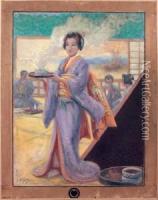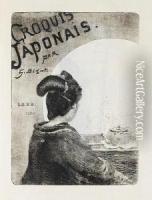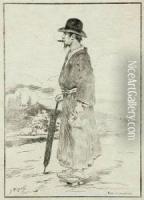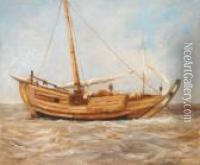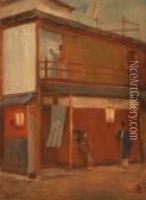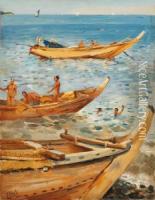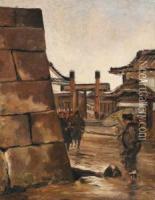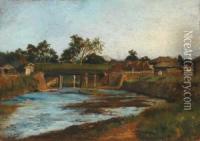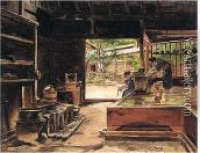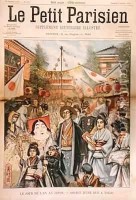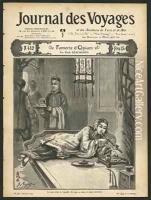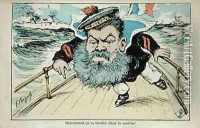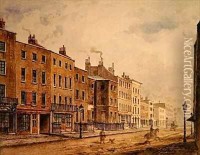Georges Ferdinand Bigot Paintings
Georges Ferdinand Bigot was a French cartoonist, illustrator, and painter, best known for his work in Japan during the Meiji period. Bigot was born on April 7, 1860, in Rennes, France. He studied art at the École des Beaux-Arts in Paris, where he honed his skills in drawing and painting.
In 1882, Bigot moved to Japan, attracted by the country's culture and the opportunities it presented for a foreign artist. He quickly immersed himself in Japanese life and became fluent in the Japanese language. Bigot started working as an illustrator for various publications and also taught Western drawing techniques at the Tokyo School of Fine Arts.
During his time in Japan, Bigot became well-known for his satirical cartoons and caricatures that often commented on the social and political changes occurring in Japan as it modernized and opened up to the West. His works were published in magazines and newspapers, and he played a pivotal role in the development of modern Japanese graphic art.
Bigot also produced a significant number of sketches, watercolors, and oil paintings that depicted everyday life in Japan, as well as traditional customs and landscapes. His artistic style was a blend of Western and Japanese influences, which made his work unique and appealing to both Japanese and foreign audiences.
In 1899, Bigot returned to France, where he continued to work as an artist and exhibit his works. His time in Japan had a lasting impact on his art, and he often reflected on his experiences there in his later works. Georges Ferdinand Bigot passed away on October 10, 1927, in France. His legacy lives on through his contributions to the cross-cultural exchange between Japan and the West during a pivotal period in history.
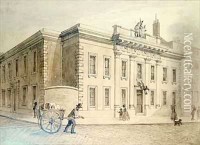
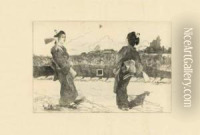
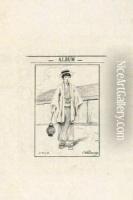
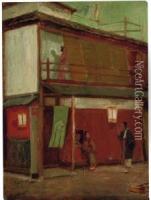
![Sans Titre [la Seine A Paris]](https://www.niceartgallery.com/pic/d263efb1/1181327s.jpg)
